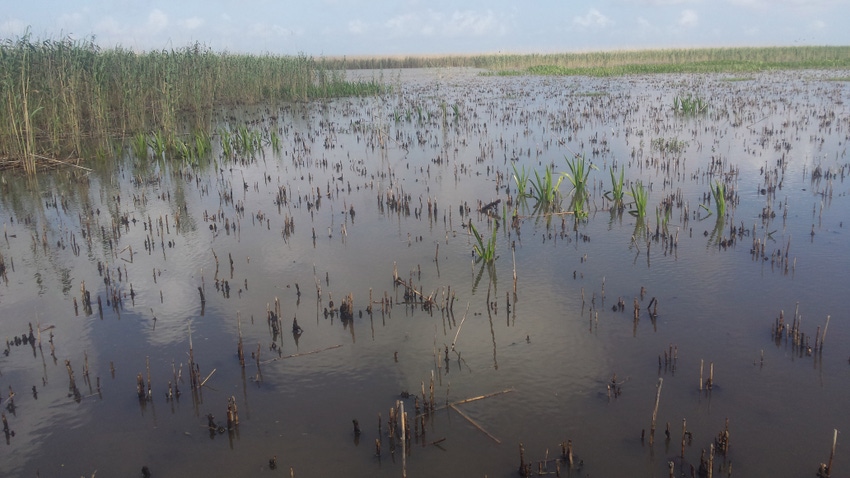April 25, 2017

An LSU AgCenter entomologist is studying a small insect that has damaged vegetation key to the survival of Louisiana coastal marsh. Rodrigo Diaz said the insect, called the Phragmites scale, has damaged a considerable amount of roseau cane in Plaquemines Parish from Venice to the mouth of the Mississippi River.
“In some areas, there was open water in March,” he said.
The roots of roseau cane hold marsh soil in place, and it helps with coastal land loss. “By far, it’s one of the best plants for preventing erosion.”
Some of the affected roseau has started regrowth, but the scales have already established colonies on the new growth.
The female scales cling to the stem. Mature females are oval, pale yellow to brown in color, and measure slightly less than a half inch long.
The insects originate from China or Japan, but how they got to Louisiana is uncertain. It has only been in the last few weeks that the scale was identified by the USDA. It’s not the first time the insect has been found in the United States.
Diaz said some duck hunters in southwest Louisiana want to bring some of the cane infested with the scales to their marsh where roseau cane creates problems for hunting. “They should not be doing that because of potential threat to non-target consequences.”
It is unknown what other grasses could be attacked by this scale. If relocated with cane, the insect could move to sugarcane, rice and grain sorghum, also grown in southwest Louisiana. Also, the scale potentially feed on native grasses essential for the marsh to thrive.
Diaz said Ducks Unlimited and Delta Waterfowl have shared his concerns about bringing scale-infested cane to other parts of the state.
Diaz will talk about the problem with entomologists Blake Wilson and Jim Cronin during an April 27 webinar with other governmental agencies. “The objectives of the webinar will be to describe the problem, present current knowledge on the biology and ecology of the scale, and propose short and long term management options.”
Diaz believes it unlikely the insect alone can be blamed for the die-off of cane. High levels of salinity in the water and subsidence of the coastal area could have also contributed to the problem. “It probably contributed to making this problem worse.”
Diaz and collaborators will establish a monitoring program and study ways of controlling the insect. Chemical control has been suggested, but most insecticides would harm aquatic life in the marsh.
In China, control with fire has been effective but using that method in Plaquemines Parish will be a challenge because of the large number of petroleum wells and pipelines in the area.
Diaz said a parasitic wasp preys on the scales, but it is not known if it is effective on a widespread basis. “We definitely need to think carefully about the best approaches.”
About the Author(s)
You May Also Like




